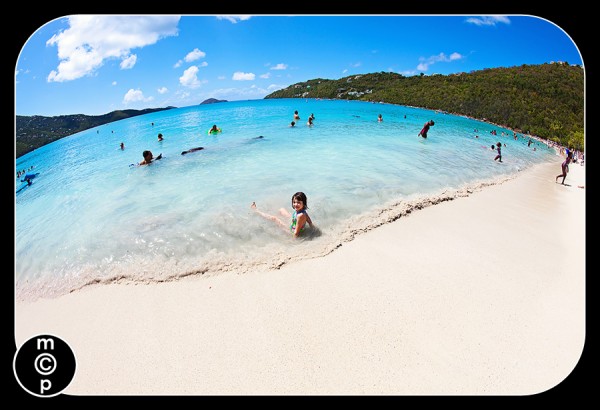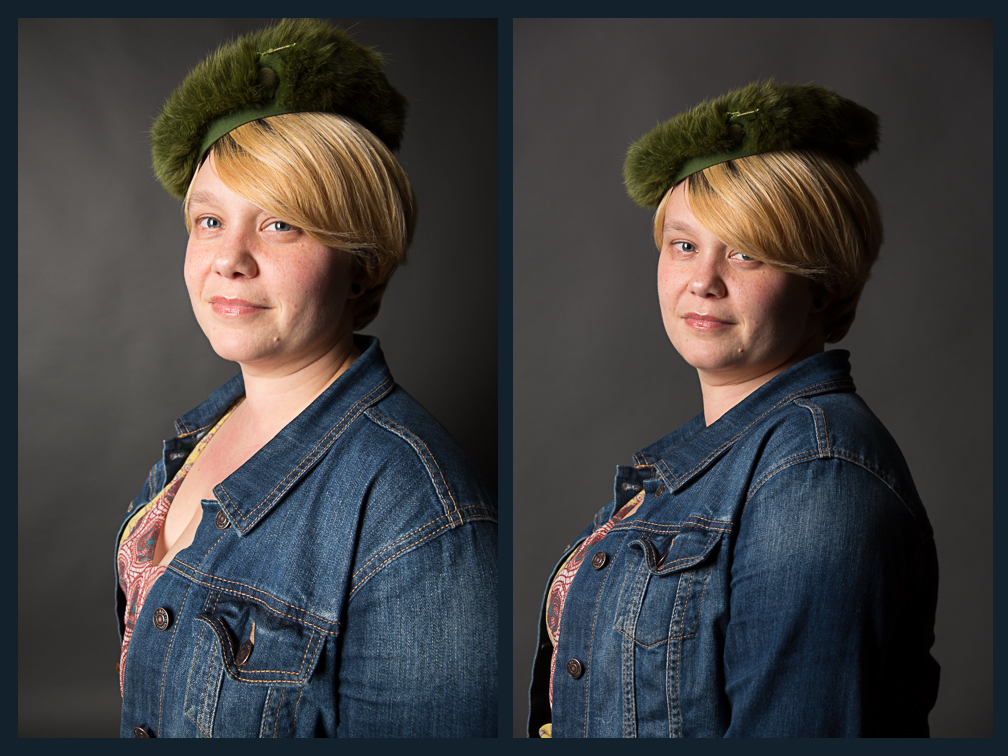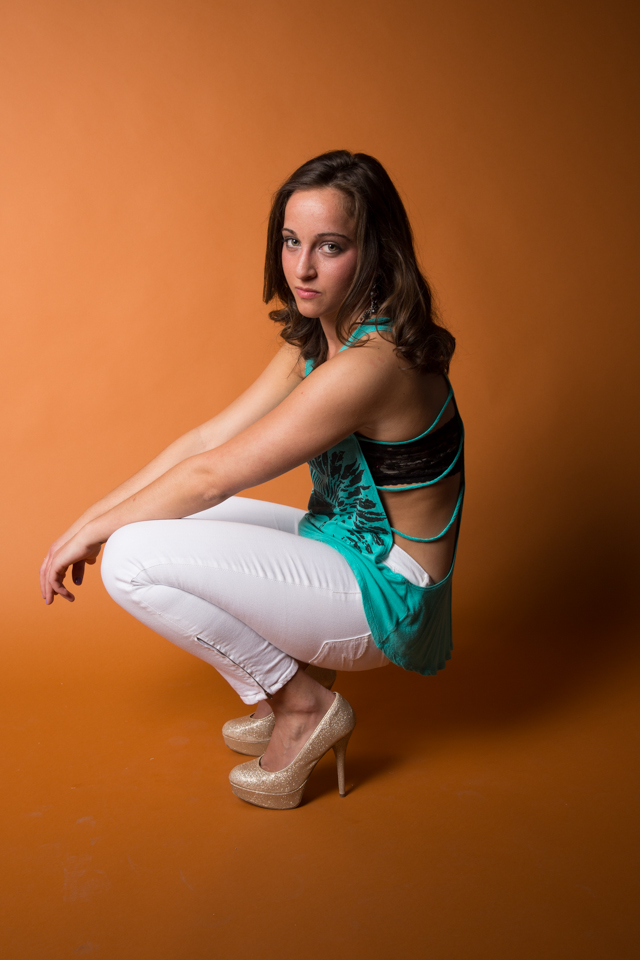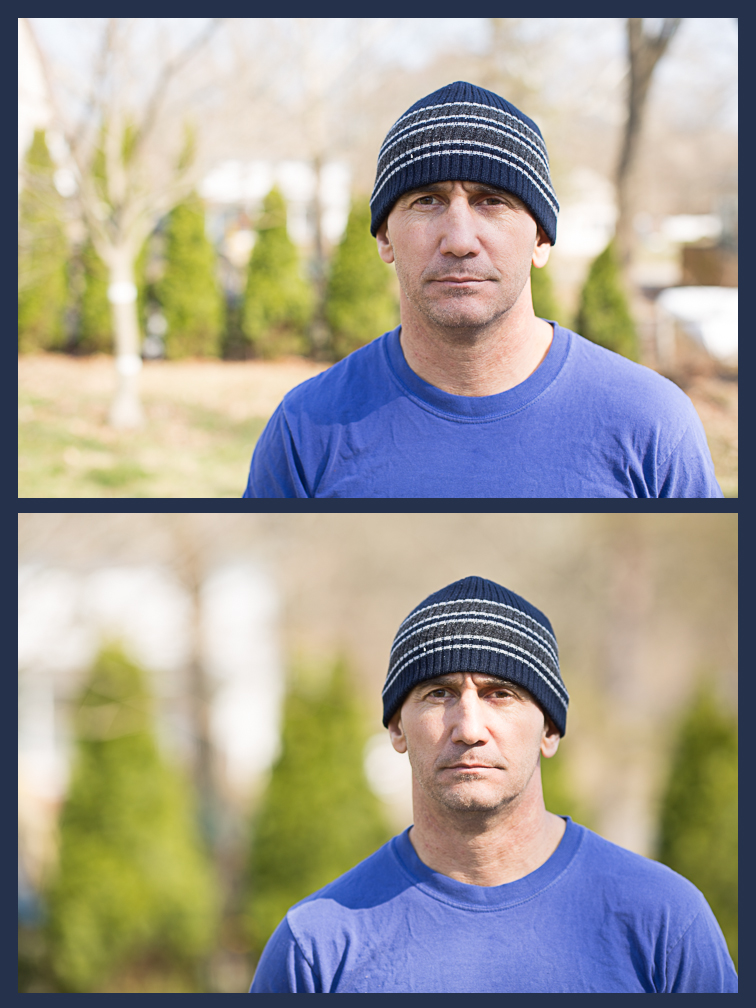Whether you’re a new photographer or someone with a lot of experience, you may have heard about lens distortion. Have you ever wondered what is the “perfect portrait lens.” While there isn’t one perfect lens or focal length for portraits, let’s check out how each focal length impacts lens distortion so you can choose the best lens for every situation.
First, what is lens distortion?
Lens distortion is the distortion of the true view of the subject in a photograph. Generally, lines that are straight in true life become skewed outward in a photograph. The lens optics cause this — the wider the lens, the greater the distortion. Have you ever seen a photograph taken with a fisheye lens, which is very wide angle? These cause major distortion (often used on purpose for creative photos)? If you have, you noticed that it was extremely distorted.

This is part of what sets fisheye images apart and makes them unique, but this effect is caused by lens distortion. One other thing to keep in mind when learning about and understanding lens distortion, especially in relation to portraits, is that the closer you are to a subject, the more pronounced your distortion will be at any focal length.
What does lens distortion look like?
Lens distortion is pretty easy to recognize once you know what it looks like. Portraits taken with at wide angles will have distorted features. In addition, if you are including all or even part of a person’s body in a portrait and are using a wide angle, your subject will tend to have a “bobble head” appearance. This is amplified by the fact that you will need to be close to your subject to take your portrait as compared to the distance you would need to be with a longer lens. Longer lenses have much less distortion. First, you do not need to be nearly as close to your subject which lessens the distortion effect. Additionally, longer lenses incorporate “lens compression”. They flatten features, rather than widen them, which is flattering for most subjects.
Below are example photos demonstrating distortion at different focal lengths. All photos in this article are SOOC (straight out of the camera). Immediately below you will see two separate compilations of eight photos. One set was taken with a full frame camera and the second set with a crop sensor camera. All photos were taken with the same settings: f/9, ISO 100, 1/160, and were taken in studio. I used three lenses. All shots from 24 through 70 mm were taken using a 24-70 2.8. The 85mm shots were taken using an 85mm 1.2, and everything from 100mm to 200 was taken using a 70-200 2.8. I used the 85mm prime because even though that focal length is included in the 70-200 range, that focal length is not marked on the lens barrel and I wanted to be sure I got that length exactly.
My assistant, who is obviously very enthusiastic, did not move between shots as I was very clear that he needed to stay still! I moved back with each shot and framed them as close to the same as I was able. The shots at the wide end are darker due to both vignetting from the 24-70 at the wide end and because I was actually standing in front of the light because I had to be so close to my subject.


As you can see, the wider the angle of the lens, the more distorted the subject becomes. At wider angles, his face is narrowed, is nose appears larger and wider, and even the edges of the backdrop are visible because of the wide angle. At longer focal lengths, the subject’s face starts to widen and look more true to life.
What about the lens correction option in Lightroom or ACR?
Both of these programs have a lens correction option, which does reverse some of the vignetting and distortion caused by wider angle lenses. But is it enough to still use these lenses as portrait lenses? I don’t think so. In the example below, you can see a before and after. The before is a SOOC shot, taken on a full frame camera at 35mm. The after is applying lens correction in Lightroom. The after shot is brighter due to the reduction of the vignetting that occurs at the wider angle, and the shot is also flattened somewhat. However, this shot after lens correction is still not comparable to a photo taken at a longer focal length.

Does this mean I always have to use a long lens when I’m shooting portraits?
The short answer to this is no. Once you understand the effects of wide angle lenses, you will learn when you shouldn’t use them but also when you can use them. So why would you want to use a wide angle lens when you shoot portraits, based on the examples above where the subject looks rather unnatural when shot at a wide angle? There are some photographers who will use wider angles to slim subjects. In the example below, similar portraits were taken at 24mm and 135mm, using the same settings except for focal length. Again, these shots are straight out of the camera. In the first portrait, the subject is more elongated and her face appears more angular, making her appear somewhat slimmer. However, you can see that her head does appear somewhat large for her body (the “bobble head” effect mentioned earlier) and this is something that takes practice.

The shot below, again straight out of camera, was taken at 37mm using the 24-70 lens. I was able to be a good enough distance from my subject where the wide angle did not cause as much distortion as it would be if I had been closer. While it would have been ideal to have been able to be even farther from my subject with a longer lens, I obtained acceptable results with the area and conditions I was working in at the time.

Lens compression was mentioned earlier. What does this mean?
Longer lenses, due to their optics, have the effect of both flattening the features of your subjects and bringing backgrounds in closer. In a studio setting while using a solid color backdrop, the background element may not be as apparent. I wanted to show an example of this in a setting where it could be clearly visualized. Compression is not distortion, but it is related and as it has been mentioned several times in the article it’s important to show an example. In the two photos below, the same settings were utilized in both photos: f/2.8, ISO 100, 1/500 shutter speed, and the same white balance settings. The left photo was taken using a 50mm lens and the right photo, a 135mm lens. My enthusiastic subject was in the same position for both photos but the background appears larger and closer in the second photo. His features also appear somewhat flatter. This is due to the lens compression of longer lenses.

So what is your perfect portrait lens? There is no one correct answer to that question. That depends on several factors, including if you shoot with a crop sensor or a full frame; your usual shooting location; and even your style. For me, an 85mm indoors and a 135 outdoors are my favorites, but yours may be different. The most important thing is to understand how different lenses will impact your photos and make your choices from there.
Amy Short is the owner of Amy Kristin Photography, a portrait, maternity, and fine art photography business in Rhode Island. She can be found at Facebook and Google+.
